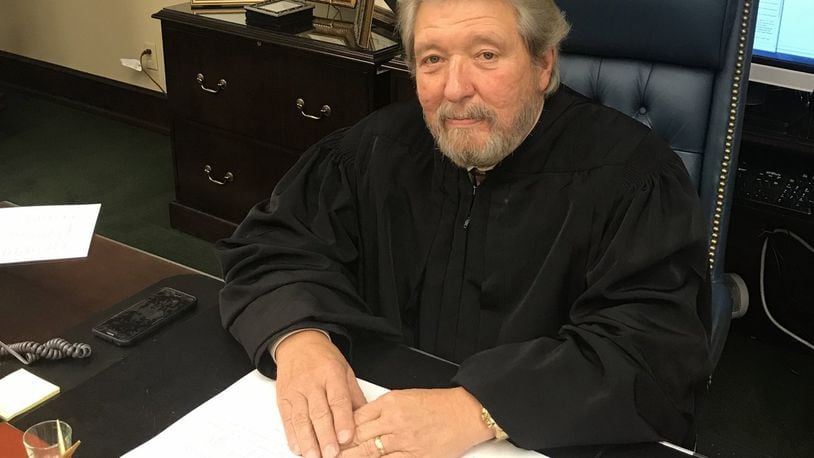Rose, along with U.S. District Court Judge Walter Rice, both have “senior status” but still handle full and growing caseloads.
The recent nomination by President Donald Trump of Ohio Fourth District Court of Appeals Judge Matt McFarland to join the bench in the Southern District of Ohio was announced by U.S. Sens. Rob Portman and Sherrod Brown.
RELATED: Ohio Senators back Matt McFarland as federal judge pick
The press release mentioned McFarland being a replacement for Rose. True, but misleading, according to Southern District of Ohio Chief Judge Edmund Sargus Jr., who said “active judges” are counted separately from “senior status” judges who can work full-time.
“We are an eight-person court and we have three open seats right now because of people either retiring completely or going senior the way Judge Rose did,” Sargus said. “We have a fourth judge who’s written a letter saying he’s going senior in February. So we really have four vacancies right now.”
Sargus said, if confirmed, Judge McFarland would work in Cincinnati, just as nominated Judge Sarah Morrison would work in Columbus. The “active judge” spots float among the three cities. Ultimately, Sargus said, Columbus will have four active judges, Cincinnati three and Dayton one.
RELATED: Judge Rice ‘incredibly honored’ federal building will be named after him
“We all agree that Dayton needs another judge,” Sargus said. “There will be another (active) judge in Dayton. It’s just another matter of the confirmation process running its course.
“I’m working harder now than I’ve ever worked because the caseload is up and we are short-staffed. But the good news is I think everybody can see that hopefully within a year from now these positions will all be filled.”
Rose said when federal judges reach a combined 80 years (age and years on the bench), they can either fully retire and still get a yearly salary or go to senior status and get cost of living increases. Some senior judges take fewer cases, but others don’t.
“I don’t have an explanation other than the fact that I still think I’m fairly physically healthy, and mentally healthy and I think I contribute,” Rose said. “I enjoy doing it and I believe a lot of judges feel that way.”
MORE: Read other stories from Mark Gokavi
Sargus said there is no limit on senior status judges and that Rice, Rose and others have helped the district deal with more work. Rice has been a “senior” judge since 2004.
“I think the danger for our court is when people are senior … we all hope they’ll all be around forever but none of us will be,” Sargus said. “Without seniors, we would be really having a difficult time keeping up with the increase in the cases.”
Sargus said, if confirmed, McFarland will help Cincinnati’s bench which has been short-staffed. McFarland was a magistrate in Scioto County Common Pleas Court Probate/Juvenile Division, was an assistant prosecutor in Scioto and Licking counties as well as having his own law practice.
SOCIAL MEDIA: Follow Mark Gokavi on Twitter or Facebook
Rose said whenever Dayton does get a new “active” judge, they will “make it work” as far as courtrooms and scheduling.
“I don’t think it will be that big of an adjustment,” Rose said. “Probably Judge Rice and I will start to back off a little but I don’t think in the foreseeable future.”
Rose said a spotlight on the federal judge terms and process could shorten his “retirement” during dinner conversations: “Maybe I won’t have to explain it as much.”
About the Author
